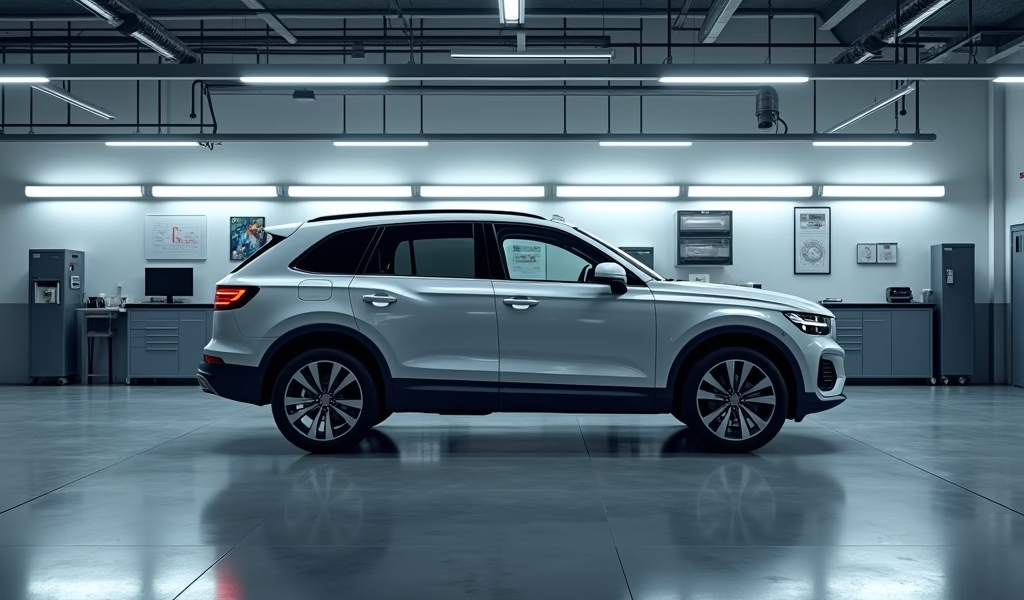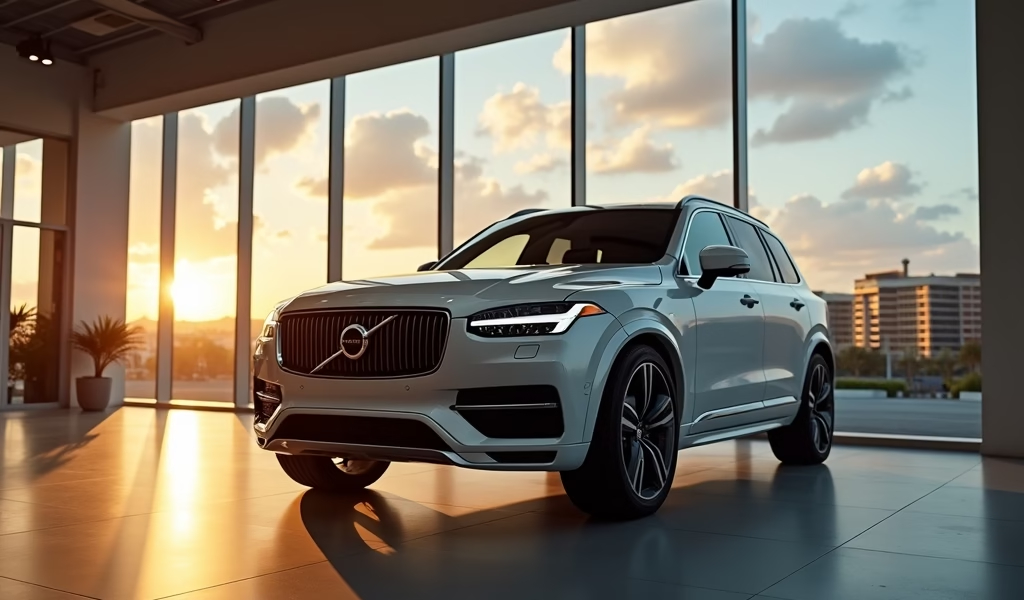Overview
This article provides detailed guidance on securing 0% financing for 72 months on SUV purchases, covering qualification requirements, timing strategies, negotiation tactics, and potential alternatives. It emphasizes comparing total costs rather than just monthly payments, recommends treating vehicle price and financing as separate negotiations, and warns of trade-offs like forfeited cash rebates that might make zero-interest financing less advantageous than it initially appears.
Table of Contents
- Understanding Zero Percent Financing on SUVs
- Qualifying for 0% Financing Deals
- Best SUVs Currently Offering 0% for 72 Months
- Hidden Costs and Trade-Offs
- Timing Your Purchase Strategically
- Negotiation Strategies for Zero-Interest Deals
- Alternatives to 0% Financing
- Final Checklist Before Signing
- Conclusion
- Frequently Asked Questions
Understanding Zero Percent Financing on SUVs
As someone who’s spent 20+ years in the automotive industry, I’ve seen countless financing options come and go. But 0% financing for 72 months remains the holy grail for SUV buyers looking to maximize their purchasing power.
So what exactly is 0% financing? In simple terms, it means you’re borrowing money to purchase your SUV without paying any interest over the loan term—in this case, 72 months or six years. You’re essentially getting free money from the manufacturer.
Let’s put this in perspective with real numbers. On a $40,000 SUV with a conventional 5% interest rate over 72 months, you’d pay roughly $6,400 in interest. With a 0% deal, that money stays in your pocket—enough for several years of maintenance, a fantastic vacation, or a healthy addition to your savings.
These offers come directly from manufacturer financing arms like Ford Credit, Toyota Financial Services, or GM Financial. They’re willing to forfeit interest income as a strategic marketing move to sell more vehicles, particularly when they need to move specific models or during seasonal sales pushes.
The beauty of these arrangements is in their simplicity: every dollar you pay goes directly toward the principal balance of your SUV. No complicated interest calculations, no feeling like you’re treading water for the first few years of payments.
However, remember that these deals exist primarily as marketing tools. Manufacturers aren’t offering them out of generosity—they’re carefully calculated business decisions designed to move inventory while still maintaining profitability through other means.
Qualifying for 0% Financing Deals
Let’s be straight here—not everyone who walks into a dealership will qualify for 0% APR car deals. These offers are typically reserved for buyers with excellent credit profiles.
Most manufacturers require a FICO score of at least 720, with some premium brands setting the bar even higher at 740 or 750. This isn’t arbitrary gatekeeping; it’s risk management. The manufacturer is essentially lending you money for free, and they want assurance you’ll make every payment on time.
Beyond your credit score, lenders scrutinize several other factors:
- Income stability and amount (usually verified through pay stubs or tax returns)
- Debt-to-income ratio (typically needs to be below 40%)
- Employment history (stability is key here)
- Previous auto loan history (especially important for these premium offers)
Even with stellar credit, most manufacturers restrict these offers to specific models and trim levels. That loaded premium edition with all the bells and whistles? It might be excluded from the 0% program, steering you toward the models they most want to move.
If you’re not quite at the credit score threshold, consider taking a few months to improve your financial profile before making your purchase. Paying down existing debt, clearing up any credit report errors, and avoiding new credit inquiries can boost your score significantly in a relatively short period.
Remember that pre-qualifying online through the manufacturer’s website can give you a good idea of your approval chances without affecting your credit score. This soft inquiry provides valuable insight before you commit to a full application.

Best SUVs Currently Offering 0% for 72 Months
The landscape of zero-percent financing offers changes constantly, but certain manufacturers consistently lead the pack in providing these attractive terms. Based on recent market trends, here are some SUV models that frequently appear with 0% for 72 months offers:
In the compact SUV segment, the Chevrolet Equinox has been a consistent player with zero-interest financing. Its combination of reasonable pricing (starting around $26,000) and decent fuel economy makes it even more attractive when paired with interest-free financing.
Ford frequently offers the Escape with these terms, particularly when clearing out inventory before new model years. The Escape’s varied powertrain options—including hybrid variants—give buyers excellent flexibility while still accessing premium financing.
For those needing more space, the Kia Telluride occasionally receives the zero-interest treatment despite its popularity. When available, these offers represent exceptional value given the Telluride’s strong resale value and extensive warranty coverage.
Hyundai has been particularly aggressive with financing incentives on the Santa Fe and Tucson models. Their strategy of combining generous financing with their already value-packed vehicles creates compelling opportunities for SUV shoppers.
According to Edmunds’ financing experts, manufacturer incentives follow predictable seasonal patterns. The most generous terms typically appear during:
- End-of-year clearance events (November/December)
- Model year transitions (typically August/September)
- Holiday weekends (Memorial Day, Labor Day, Black Friday)
- End-of-quarter periods (March, June, September, December)
Regional promotions can also play a significant role. Dealers in areas with slower-moving inventory often receive enhanced financing options from manufacturers. That AWD-equipped SUV might come with better financing terms in Florida during hurricane season than in Colorado where they’re consistently in demand.
Hidden Costs and Trade-Offs
That gleaming “0% for 72 months” banner at the dealership can be mighty tempting, but there are almost always trade-offs involved. As a mechanic who’s seen countless customers surprised by the fine print, let me walk you through what’s typically hiding behind those zeros.
The most common trade-off is the cash rebate sacrifice. Manufacturers generally structure their incentives as either/or propositions: take the 0% financing OR take the cash back (which might range from $1,000 to $5,000 depending on the model). This creates a financial fork in the road that requires careful calculation.
For example, on a $45,000 SUV, a $3,500 rebate paired with a 3% conventional loan might actually save you more than the 0% offer depending on your down payment and term length. Always run the numbers both ways before deciding.
Then there’s the less negotiable purchase price. Dealerships are often less flexible on the vehicle’s selling price when you’re already benefiting from special financing. The sales manager knows you’re receiving substantial value through the financing, so they may hold firm on MSRP or offer minimal discounts.
Don’t overlook the insurance implications either. Lenders typically require comprehensive coverage on financed vehicles, and with a 72-month term, you’ll be paying those premium rates for six years. Additionally, gap insurance becomes more important with extended financing terms, as you’ll be “underwater” on the loan (owing more than the vehicle is worth) for a longer period.
Some zero-percent offers come with subtle restrictions on eligible models. The offer might apply only to certain trim levels or exclude popular options and packages. This steering tactic pushes buyers toward specific inventory the manufacturer wants to move.
Finally, consider the opportunity cost of tying up your money in a depreciating asset for six years. If you have excellent credit to qualify for 0% financing, you likely also qualify for other financial opportunities. Some financially savvy buyers might do better with a shorter loan term or even investing the difference elsewhere.
Timing Your Purchase Strategically
Timing can be everything when hunting for 0% interest car deals on SUVs. After decades in this industry, I’ve noticed consistent patterns in when manufacturers roll out their most aggressive financing offers.
The end of the calendar year (November and December) consistently delivers the richest incentives. Dealers are hustling to meet annual sales targets, manufacturers are clearing inventory before the new year, and the combination creates perfect conditions for zero-interest offers. December in particular often represents the sweet spot for these deals.
Model year transitions create another prime opportunity. When manufacturers begin shipping next year’s models to dealerships (typically late summer), pressure to move current-year inventory intensifies. That 2023 model sitting next to a shiny new 2024 version suddenly becomes much more negotiable.
Monthly sales cycles shouldn’t be overlooked. Most dealerships operate on monthly quotas, making the last week of any month—but especially the last week of a quarter—an excellent time to negotiate. Sales managers facing quota shortfalls may suddenly discover flexibility in financing approvals they didn’t have earlier in the month.
For the truly strategic buyer, following industry news can provide an edge. Manufacturers sometimes roll out special financing promotions when:
- A competing brand launches a new model in the same segment
- Sales of a particular model have slowed unexpectedly
- Production capacity exceeds sales (creating inventory buildup)
- Interest rates are rising in the broader economy
Patience can be your strongest asset in securing these deals. If you can maintain flexibility on timing, model year, and even color preferences, you dramatically increase your chances of landing that elusive 72-month, zero-interest financing.

Negotiation Strategies for Zero-Interest Deals
Having spent years on both sides of the desk in automotive sales and service, I’ve developed strategies that help customers maximize these financing promotions. The fundamental principle: treat the vehicle purchase and financing as separate transactions, even if the dealership wants to blend them together.
Start by researching the true market value of your desired SUV using resources like Kelley Blue Book. This establishes your baseline for negotiations before any financing discussions occur. Knowledge is power in the showroom, and dealers respect prepared buyers.
When you arrive at the dealership, focus initially on the out-the-door price as if you were paying cash. Only after reaching an acceptable vehicle price should you reveal your interest in the special financing. This prevents the common tactic of giving with one hand (0% financing) while taking with the other (inflated vehicle price).
Always secure pre-approval from an outside lender before visiting dealerships. This competitive offer provides leverage and a backup plan if the manufacturer’s financing approval process reveals unexpected hurdles. It also demonstrates that you’re a serious, qualified buyer who has options.
When reviewing the deal, focus on the total cost—not just the monthly payment. Dealers sometimes emphasize the affordable monthly payment while extending the term or adding products that inflate the overall price. The number that matters is the final amount you’ll pay over the entire 72 months.
Consider this negotiation approach:
- Get the dealer to commit to a specific out-the-door price in writing
- Separately negotiate your trade-in value (if applicable)
- Only then begin discussing financing options
- Request a breakdown of all fees and add-ons
- Be prepared to walk away if the numbers don’t make sense
Remember that the finance office is where dealerships often make their largest profits—through extended warranties, protection packages, and other add-ons. Be particularly vigilant when reviewing these optional products, as their cost can quickly offset the benefits of your 0% financing.
Alternatives to 0% Financing
While zero-percent financing sparkles like chrome in the showroom, it’s not always the best option for every SUV buyer. Having advised countless customers on their purchasing decisions, I’ve identified several alternatives worth considering.
Low-rate financing (0.9% to 2.9%) often comes with more flexibility and fewer restrictions. These near-zero rates typically allow you to combine financing with cash rebates or other incentives, potentially creating greater overall value. The slightly higher interest might be offset by thousands in available cash incentives that aren’t offered with the 0% deal.
Shorter-term financing deserves serious consideration. While 72 months at 0% seems unbeatable, a 48 or 60-month term at 0% or a low rate reduces your exposure to depreciation and shortens the period when your loan balance exceeds your SUV’s value. Yes, the monthly payments will be higher, but you’ll be building equity faster and reducing your long-term risk.
Cash rebates paired with outside financing can sometimes outperform manufacturer financing. For example, a $4,000 rebate combined with a 3% loan from your credit union might save you more than the 0% manufacturer offer. This approach requires careful calculation of the total cost over the life of the loan.
Leasing provides another pathway to a new SUV with potentially lower monthly payments than financing. While you won’t build equity in the vehicle, leasing can be advantageous if you:
- Prefer driving a new vehicle every 2-3 years
- Don’t accumulate high mileage (typically limited to 10,000-12,000 miles annually)
- Want to avoid long-term maintenance concerns
- Benefit from business-use tax advantages
For buyers with substantial cash reserves, a large down payment combined with a shorter-term loan can sometimes be the most economical approach. By reducing the principal amount financed, you minimize both your interest expense and the period of negative equity, even if you don’t qualify for special rate programs.
Final Checklist Before Signing
After helping countless customers navigate the financing maze, I’ve developed this pre-signature checklist to ensure you’re getting exactly what you expect with your SUV purchase.
First, verify that all verbal promises appear in writing on your contract. The friendly salesperson’s assurances about included maintenance or accessories mean nothing if they’re not documented. Trust but verify—every time.
Check the fine print regarding early payoff. While most 0% loans don’t include pre-payment penalties, confirm this detail in your contract. Having the flexibility to accelerate payments without penalty provides valuable options if your financial situation improves over the loan term.
Scrutinize the payment schedule to ensure it reflects exactly 72 months at 0%. Some contracts might show 71 payments plus a different final payment, or other variations that don’t match what was promised. The math should be simple: purchase price (plus taxes and fees) divided by 72 equals your monthly payment.
Review all fees carefully, especially:
- Documentation fees (these vary widely by dealership and region)
- Title and registration costs (should match your state’s published rates)
- Delivery or destination charges (these should have been included in your price negotiations)
- Any added protection packages or warranties (these should be itemized separately)
Confirm that the VIN on all paperwork matches the actual vehicle you’re purchasing. This simple check prevents confusion, especially when dealing with similarly equipped vehicles on the lot.
Finally, evaluate any extended warranty or protection packages offered at signing with a critical eye. These add-ons are major profit centers for dealerships and may offset the benefits of your 0% financing. While some manufacturer-backed plans offer genuine value, others provide minimal benefit relative to their cost.
Conclusion
Navigating the world of SUVs with 0% financing for 72 months requires both information and strategy. When properly leveraged, these offers can save you thousands of dollars and make that spacious, versatile SUV more affordable than you might have thought possible.
Remember that the true value of any financing deal goes beyond the interest rate. Consider your complete financial picture, including the purchase price, available rebates, loan term, and your long-term ownership plans. The best deal balances all these factors to minimize your total cost of ownership.
Timing your purchase strategically, understanding qualification requirements, and recognizing potential trade-offs will put you in the driver’s seat during negotiations. Come prepared with research, maintain focus on the total cost rather than just monthly payments, and don’t hesitate to walk away if the numbers don’t align with your financial goals.
For many buyers, zero-percent financing represents an excellent opportunity to maximize purchasing power while maintaining budget discipline. However, it’s worth considering all available alternatives to ensure you’re truly getting the best deal on your new SUV.
Whether you drive home with a 0% financing deal or another arrangement that better suits your circumstances, the key is making an informed decision based on your specific needs and financial situation. With the knowledge you’ve gained here, you’re well-equipped to navigate the showroom with confidence.
Frequently Asked Questions
What credit score do I need to qualify for 0% financing on an SUV?
Most manufacturers require a minimum FICO score of 720, with some premium brands setting the threshold at 740 or higher. Your debt-to-income ratio and employment history also play significant roles in approval decisions.
Are there any hidden fees with 0% financing offers?
While the financing itself doesn’t include hidden interest, you may encounter documentation fees, mandatory add-ons, or restrictions on rebates that offset some savings. Always review the complete contract before signing.
Can I negotiate the price of an SUV with 0% financing?
Yes, though dealerships may be less flexible on vehicles with special financing offers. Negotiate the vehicle price first before discussing financing options to maintain your leverage.
Is it better to take 0% financing or a cash rebate?
This depends on the rebate amount, loan term, and interest rate you’d qualify for otherwise. Calculate the total cost both ways—sometimes a substantial rebate combined with low-rate outside financing saves more than the 0% offer.
What happens if I want to pay off my 0% loan early?
Most 0% loans don’t include pre-payment penalties, but always verify this in your contract. Since there’s no interest to save, the main benefit of early payoff is eliminating the monthly payment obligation.

